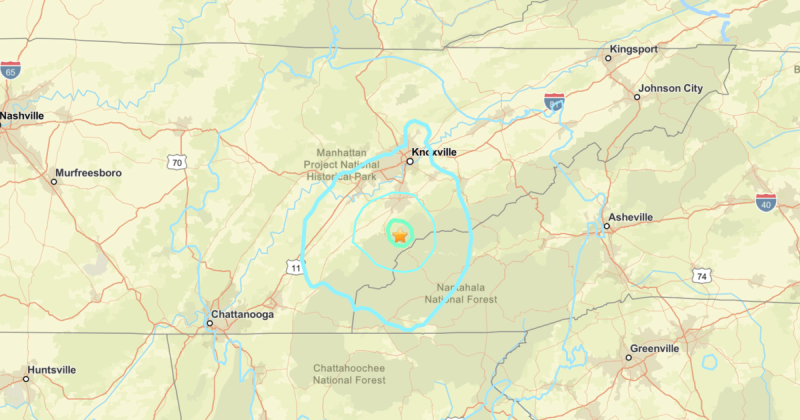
A 4.1 magnitude earthquake struck near Greenback, Tennessee, on Saturday morning, sending tremors as far as Atlanta, Georgia. The quake, reported by the U.S. Geological Survey (USGS), originated around 9 a.m. EDT, approximately 12 miles from Greenback, a town located about 30 miles south of Knoxville. This wasn’t just a localized event; reports of shaking came in from across the region, including western North Carolina.
Residents in several areas described feeling the earth move. Gabriela Reilly, in Braselton, Georgia (northeast of Atlanta), recounted how the earthquake shook her home while she was making waffles. She and her husband initially thought a large aircraft was flying unusually low, only realizing it was an earthquake when they saw their ceiling fan shaking for about 10 seconds.
Meteorologists at various television news stations in Georgia and North Carolina also confirmed experiencing the tremors, highlighting the quake’s significant reach. The Eastern Tennessee seismic zone, known for its activity, is responsible for these seismic events. This zone extends across parts of Tennessee, Georgia, and Alabama, making earthquakes, while not daily occurrences, a familiar possibility for residents.
This incident brings to mind two notable earthquakes in December 2018. A 4.4 magnitude quake centered in Decatur, Tennessee, shook homes as far away as Atlanta. Days later, a smaller 3.0 magnitude quake struck near Mascot, Tennessee, also felt in parts of Georgia, Kentucky, and North Carolina. These past events, along with Saturday’s earthquake, serve as a reminder of the seismic activity in the region and the potential for tremors to be felt over a wide area.
While a 4.1 magnitude earthquake is not exceptionally powerful, its impact across state lines underscores the importance of preparedness. Knowing what to do in the event of an earthquake, from drop, cover, and hold-on techniques to having emergency supplies readily available, can significantly improve safety and minimize potential damage.










